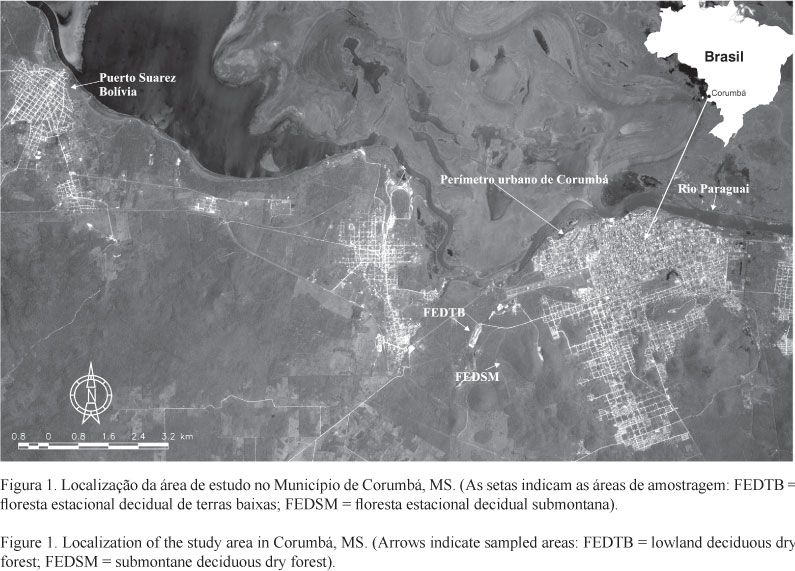(Structural features of the arboreal community in remnants of dry forest in Corumbá, MS, Brazil). The structure of the arboreal community of two types of dry forest was compared in an altitudinal gradient of lowland (FEDTB) and submontane (FEDSM) dry forests, in Corumbá, MS, Midwest Brazil. Tree species with circumference at breast height ³ 15 cm were sampled, using the point centered quarter method. In the FEDTB 80 points were demarcated, and in FEDSM 78 points were distributed in the following altitudes: 180 m (18 points), 220, 260 and 300 m (20 points each). In FEDTB 34 species were sampled; Calycophyllum multiflorum Griseb., Ceiba pubiflora (A. St.-Hil.) K. Schum. and Anadenanthera colubrina (Vell.) Brenan have the highest VI values. In FEDSM, 33 species were sampled, and Anandenanthera colubrina, Ceiba pubiflora and Acosmium cardenasii H. S. Irwin & Arroyo were the most important. The distribution pattern of the species varied along the altitudinal gradient. In both forests Shannon's diversity and equitability indexes were 2.9 and 0.8, respectively, and the most representative families were Fabaceae (8 species) and Rubiaceae (4 species). The studied forests have low density of individuals in relation to other studies, except for the track at 300 m. About 22.46% of the individuals of arboreal community had basal ramifications and were in the initial phases of succession. The canopy varied from 6 to 12 m, and emergent individuals of up to 18 m. These remnants represent a source of biodiversity for the Pantanal, being an important part of the natural forest corridors of the region.
altitudinal gradient; deciduous forest; floristic compostition; phytosociology











